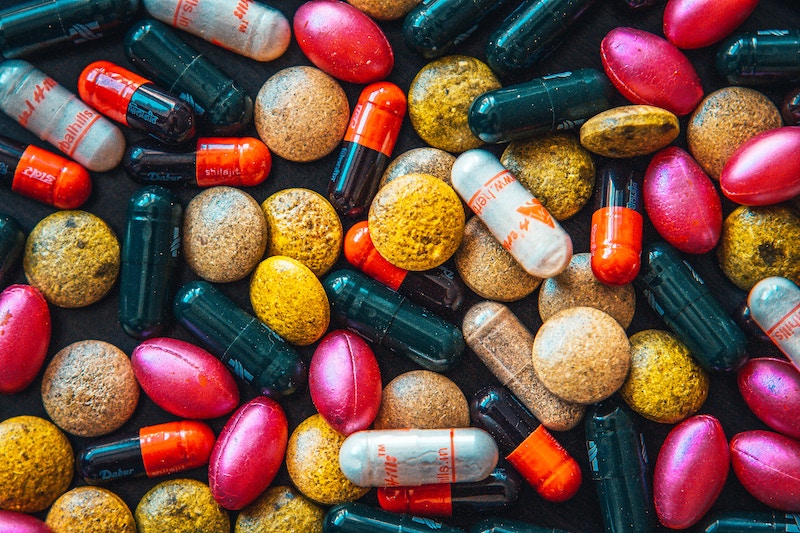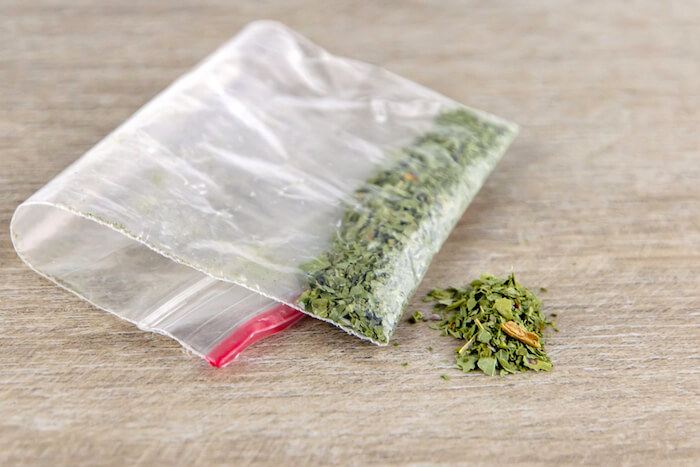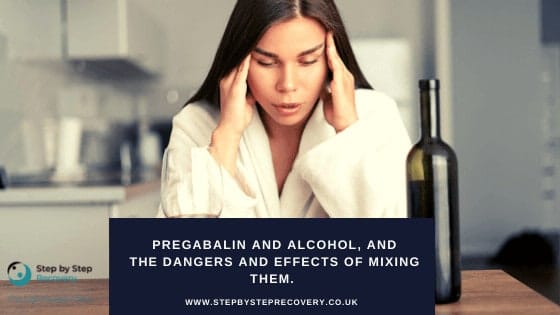Designer drugs, also known as synthetic drugs, are chemically designed substances created in a laboratory to mimic the effects of illicit drugs, prescription drugs, or both. These drugs are typically made to bypass legal restrictions and evade drug testing protocols, making them a popular alternative to traditional drugs.
One of the most significant dangers associated with designer drugs is that the chemical structure of designer drugs is constantly changing. This can make it difficult to treat someone who is having an adverse effect.
In this article, we will explore what designer drugs are, the most common types and names of designer drugs in the UK, the law around “legal highs” and their potential dangers.
What Is a Designer Drug?
Designer drugs are usually made by modifying the chemical structure of existing drugs with legal or illegal substances to create new compounds. These compounds may be sold as legal highs, herbal incense, bath salts or other substances not for human consumption, either on the streets or online.
Although designer drugs encompass various substances with different effects, they share some common characteristics:
- Unclear or misleading labelling information
- Inconsistent ingredients and dosages from batch to batch
- A lack of scientific or medical data on their safety profile and health risks
- Continuous tweaking of the molecular structure or chemical components.
Designer Drug Types and Street Names
There are four main groups of designer drugs, each mimicking the effects of certain illegal drugs. Below is the key information you need to know about each group.
1. Synthetic Cannabinoids
These drugs are synthetic versions of the active chemical found in cannabis. They look similar to dried cannabis, herbs or plant matter and are smoked in the same way, either in cigarette papers, bongs or pipes.
Designed to mimic the effects of cannabis, synthetic cannabis designer drugs can cause a range of harmful effects, including hallucinations, paranoia, and seizures.
Common street names include:
- Spice
- K2
- Joker
- Black Mamba
- Kush
- Kronic
- Amsterdam Gold
- Annihilation
- Clockwork Orange
- Devil’s Weed
- Mary Joy.
2. Designer Stimulants
Stimulants, also known as “bath salts,” are synthetic derivatives of cathinone, a stimulant found in the khat plant. These drugs are sold in crystal, powder and pill form and can be eaten, snorted or injected.
Similar to substances such as amphetamine, cocaine, and ecstasy, they have a significant stimulant effect and can produce a euphoric high. Like the illicit drugs they aim to replicate, designer stimulants can lead to various health risks, including high blood pressure, heart problems, and anxiety and panic attacks.
Common street names include:
- Cloud Nine
- Ivory Wave
- Vanilla Sky
- PVP, Flakka, Gravel
- Energy1
- Nrg1
- Rave
- Cosmic Kelly
- Legal E
- Pep.
3. Designer Tranquillisers
These drugs mimic prescription drugs such as tranquillisers or anti-anxiety drugs, in particular from the benzodiazepine family. Another designer drug that has become more popular is Nitrous Oxide.
One of the reasons for the growth of nitrous oxide users is the low cost and ease of obtaining it. It is often simply inhaled from a balloon and sold online for whipped cream chargers in small silver metal canisters. Designer tranquilisers and nitrous oxide have a significant inhibitory and relaxing effect and can make you faint, lose consciousness, or suffocate.
Common street names include:
- Balloons
- Charge
- Laughing gas
- Nas
- Noz
- N-Bomb
- Whippets.
4. Synthetic Hallucinogens
Hallucinogens are sold in various forms, including powders, pills, smoking mixtures, liquids, capsules, or on perforated tabs. Also known as psychedelics, these drugs change your perception of time, sight, sound, and touch, which may be experienced as unreal, dreamlike, and even frightening.
Synthetic hallucinogens can cause various harmful effects, including hallucinations, paranoia, and seizures.
Common street names include:
- LSD
- 2C-B
- NBOMe
- ABDF
- FLY
- DOB-Dragonfly
- Spamfly
- Placid
- B-fly.
Signs and Symptoms of Designer Drug Use
It can be very difficult to detect if someone is using designer drugs. However, if you are concerned about someone, there are a few things you can look out for.
Some of the physical signs that someone may be using designer drugs include symptoms such as:
- Nausea and vomiting
- Shortness of breath
- Chest pains or fast heart rate
- Muscle twitches and spasms
- Seizures
- Hallucinations.
Other indicators of possible designer drug use may include the presence of drug paraphernalia like pipes or rolling papers, the use of perfume or cologne to mask the smell of smoke, and the presence of foil packaging labelled “not for human consumption”.
In addition, the use of designer drugs may lead to behavioural changes, including:
- Sudden change in friends
- Loss of interest in previously enjoyable activities
- Financial problems
- Difficulties at school or work.
Can You Overdose on Designer Drugs?
Due to the unknown chemical compounds, there is a possibility you could overdose on a designer drug. Deaths recorded from a new psychoactive substance (NPS) case are based on toxicological evidence and findings made by a coroner after investigating a death related to drug use. This approach is used because sometimes the cause of death may not be apparent, such as in cases of multiple drug toxicity or death caused by environmental factors like falling from a height due to drug use.
If you have chest pain, are finding it hard to breathe, or someone else is showing signs of shallow or laboured breathing or complaining of chest pain, always call 999 immediately.
Long-Term Health Risks of Designer Drugs
The effects of designer drugs can vary greatly depending on the type of drug and the amount consumed. They can also be influenced by age, weight, and overall health. Additionally, designer drugs can have serious and often unpredictable effects on the body and mind.
Long-term risks include severe and often irreversible heart, liver, and kidney damage. These drugs can also lead to mental health problems such as depression, anxiety, and psychosis.
UK Law and Designer Drugs
Designer drugs are often sold as “legal substances” that can be bought online in other forms, such as plant food, or with a disclaimer that they are unsuitable for human consumption. Buying these substances is illegal unless they have been classified as psychoactive.
Psychoactive substances: Changes have been made to the law on psychoactive substances, commonly referred to as “legal highs”. These substances are designed to replicate the effects of drugs such as cocaine and ecstasy but are not classified as class A, B, or C drugs. Under the Psychoactive Substances Act, producing, supplying, or importing them for human consumption, including personal use, is now illegal. However, possession for personal use is not considered an offence.
Synthetic cannabinoids: like Spice, are classified as Class B substances under the Misuse of Drugs Act, and offences related to them carry heavy penalties, including imprisonment and fines.
Treatment Options for Designer Drug Abuse
When someone who regularly uses designer drugs suddenly stops, they may experience withdrawal symptoms, such as depression, agitation, nausea, vomiting, tremors, cold sweats, rapid heart rate, and high blood pressure. While there are currently no medications specifically approved for treating designer drug addiction, inpatient treatment at a residential rehab can provide medical intervention with sedatives, anti-anxiety drugs, and antipsychotic drugs to manage these unpleasant withdrawal symptoms.
The most effective treatment options for designer drug addiction are likely similar to those used for treating other types of addictions. For instance, interventions such as cognitive behavioural therapy (CBT), group therapy, individual counselling, and participation in support groups.
Although there is limited information available in scientific and medical literature about treating designer drug abuse, Step by Step Recovery has extensive experience in helping patients through the detoxification process and addressing the psychological aspects of designer drug use.
Take control of your life and break free from addiction with Step by Step Recovery. We offer free and confidential advice on addiction treatment. Simply complete our online assessment form or call our understanding team on 0800 170 1222. Ready to take the first step towards a brighter future? Reach out to Step by Step Recovery today.




